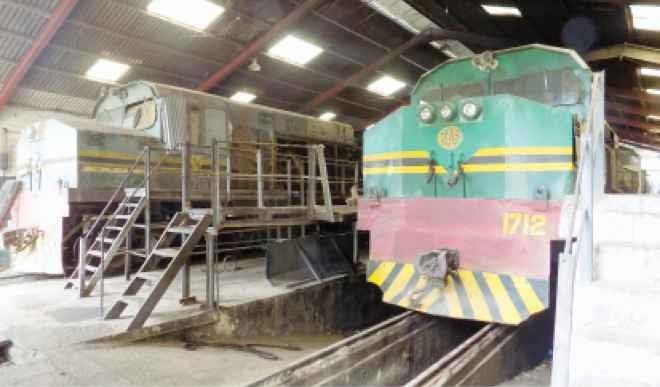
Ahmed Ali, Kafanchan
In the past, working with the Nigerian Railway Corporation attracted a lot of pride and glamour but gradually, the system collapsed to a level that identifying with the railway now elicits sympathy.
The Kafanchan Railway Station is the administrative headquarters of the defunct North-Central District of the Nigerian Railway Corporation with about three sub-districts; Jos (Plateau State), Lafia (Nasarawa State) and Makurdi (Benue State).
The district covered Kaduna South in the north, from Kankomi to Kafanchan, from Kafanchan it terminated in Haifan, Plateau State and from Kafanchan to Igumale in the southern part, after Otukpo and Makurdi stations in Benue State, stretching about 571 kilometers.
With trains running from the far North to East through Kafanchan, the North-Central District generated about 30 percent of the railway’s revenue from passenger traffic in the late 80’s. The movement of goods from the north to east and vice-versa enhanced the socio-economic life of the benefitting areas.
For someone who knew the Kafanchan Railway Station 30 years ago, entering the station now would almost make him cry. Today, it has reduced to a bushy abode of reptiles. Some houses in the staff quarters have been vacated because of extensive damages.
Linda Ezekiel, a 60-year-old former trader at the station, told our reporter that in the 80’s, the station was always very busy, with many people engaging in diverse activities.
“Traders, hawkers, beggars orange and palm oil suppliers from Benue and Enugu were always at the station. I can say that almost everybody was benefiting. I used to buy 30 bags of oranges and distribute them to other buyers, I made a lot of money, but now, see how the system has turned, almost everything has gone, our business has stopped,” she said.
An official of the North-Central District of Nigerian Railway Corporation, Mr. Patrick Ozemoya, said in the 80’s, the movement of trains in and out of Kafanchan was daily, adding, “Almost three passengers trains were either coming or leaving the station every day. We had Lagos-Jos (3PL), Lagos-Maiduguri (11ML) and Kano-Port Harcourt and each was carrying no fewer than 16 to 17 wagons with 96 passengers, in addition to the daily mass transit that was moving from Kaduna to Kafanchan every day, apart from cattle train from Maiduguri to Port Harcourt, Kaduna to Maiduguri and Port Harcourt to Kaduna thrice in a week. But now, sorry to say, we have only one train moving from Kano to Port Harcourt (with only seven wagons). In the late 80’s we had about 15, 000 staff in the North-Central District but now, we have only about two to three thousand, some have died while some retired.”
“Past regimes have sunk billions of naira into the rehabilitation of the NRC but that is not yielding any positive result. That is why when this government came to power, they said no, we have to change! What we are going to do now is, we are going to give the railways to a company, General Electric (GE), just as NEPA was privatized, and they will revive the system for 25 years to make everything work well before returning it to the federal government. But before they do that they must first pay off and settle all the workers. They may come with their engineers and if you have interest to work with them, you may apply again for re-employment and it is left for them to decide whom to work with.
“I think this is the best solution for this government because billions of naira has been wasted. The federal government is now trying its best to rehabilitate the railways and it has started from other districts (Port Harcourt – Kaduna and Lagos-Kano) and when they finish there they are coming to our district, the North-Central, with Kafanchan as headquarters, so we are not redundant. We are happy with this development because reviving the railway system in Nigeria would bring advantages and our roads will last longer than what we are seeing now. Besides, travelling by rail is the oldest, safest and cheapest means of transportation in Nigeria.”

 Join Daily Trust WhatsApp Community For Quick Access To News and Happenings Around You.
Join Daily Trust WhatsApp Community For Quick Access To News and Happenings Around You.


